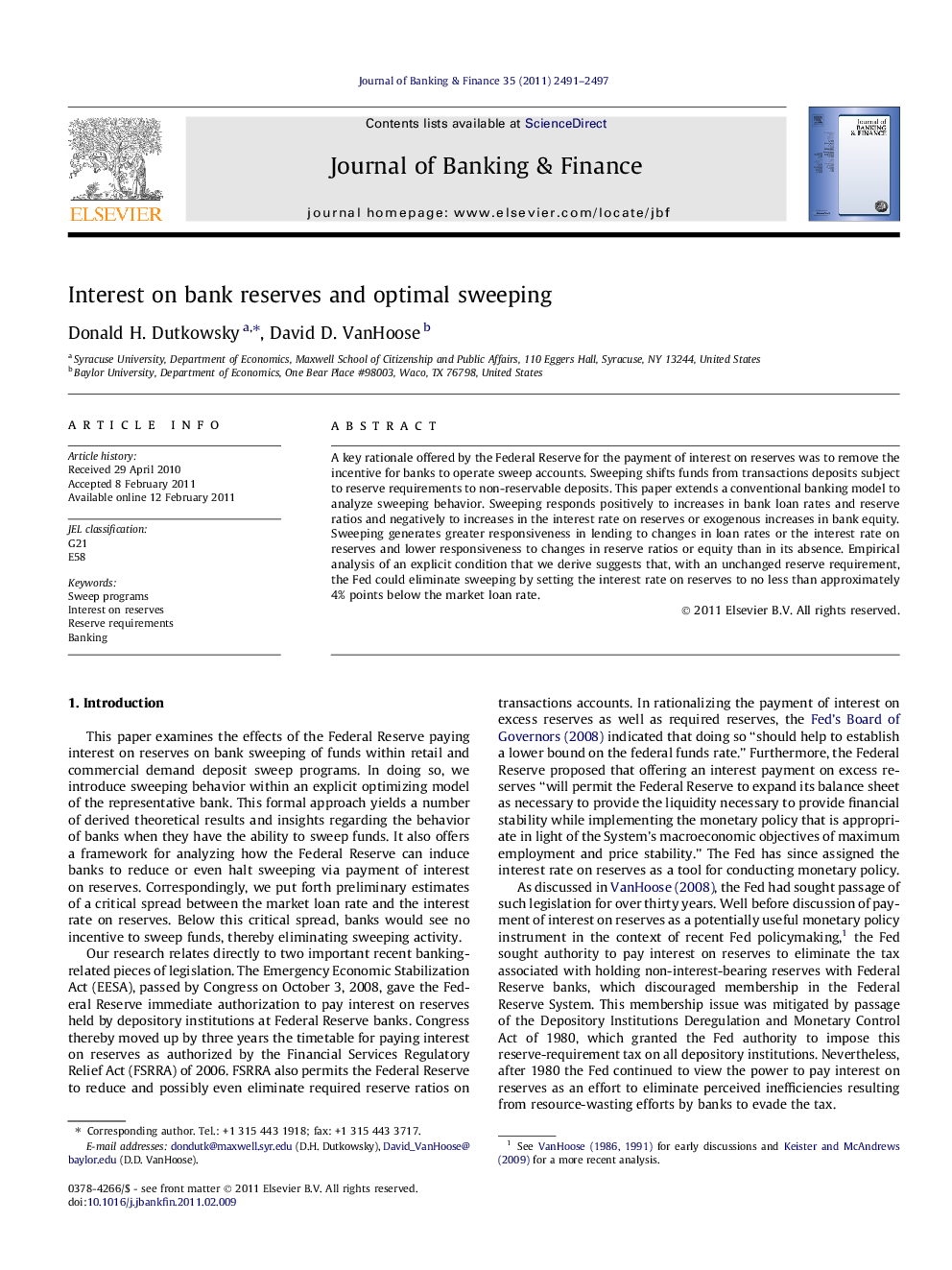| Article ID | Journal | Published Year | Pages | File Type |
|---|---|---|---|---|
| 5089839 | Journal of Banking & Finance | 2011 | 7 Pages |
Abstract
A key rationale offered by the Federal Reserve for the payment of interest on reserves was to remove the incentive for banks to operate sweep accounts. Sweeping shifts funds from transactions deposits subject to reserve requirements to non-reservable deposits. This paper extends a conventional banking model to analyze sweeping behavior. Sweeping responds positively to increases in bank loan rates and reserve ratios and negatively to increases in the interest rate on reserves or exogenous increases in bank equity. Sweeping generates greater responsiveness in lending to changes in loan rates or the interest rate on reserves and lower responsiveness to changes in reserve ratios or equity than in its absence. Empirical analysis of an explicit condition that we derive suggests that, with an unchanged reserve requirement, the Fed could eliminate sweeping by setting the interest rate on reserves to no less than approximately 4% points below the market loan rate.
Related Topics
Social Sciences and Humanities
Economics, Econometrics and Finance
Economics and Econometrics
Authors
Donald H. Dutkowsky, David D. VanHoose,
